Improvement Temporary
“[M]odern thinkers look to numbers for signs that show the emergence of a world founded on rational and moral principles. They believe that improvement in ethics and politics is incremental and accretive: one advance is followed by another in a process that stabilises and strengthens the advances that have already taken place. Now and then regress may occur, but when this happens it does so against a background in which the greater part of what has been achieved so far does not pass away. Slowly, over time, the world is becoming a better place. The ancient world, along with all the major religions and pre-modern philosophies, had a different and truer view. Improvements in civilisation are real enough, but they come and go. While knowledge and invention may grow cumulatively and at an accelerating rate, advances in ethics and politics are erratic, discontinuous and easily lost. Amid the general drift, cycles can be discerned: peace and freedom alternate with war and tyranny, eras of increasing wealth with periods of economic collapse. Instead of becoming ever stronger and more widely spread, civilisation remains inherently fragile and regularly succumbs to barbarism. This view, which was taken for granted until sometime in the mid-18th century, is so threatening to modern hopes that it is now practically incomprehensible.”
— New John Gray coming soon! Pre-order now!
Jamie xx, "Loud Places (feat. Romy)"
If even the fact that the weekend is within our grasp is not nearly enough to motivate you this morning I suggest you listen to this a little; it is bound to help. [Via]
New York City, March 25, 2015
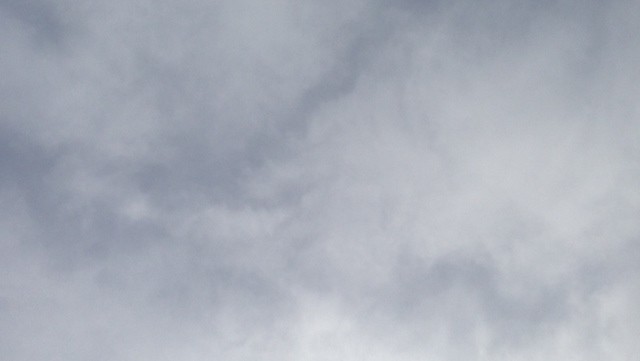
★ Murk blurred the river, one of only two faults on a fine February morning, the other fault being that April was less than a week away. The sunscreen came out of the medicine chest, as a moisturizer for cold-parched skin. An unusual keer-ing and a shaking in the branches led to a glimpse of a blue jay. Clouds eventually suppressed the light. The subway steps were spotted with rain in early afternoon — the evening showers had come on early, and without the evening warming trend. People were not dressed for this. At preschool pickup time the pavement was wet and the breeze was raw. By six, the chill had lifted. The gray clouds were full of unexpected little ripples, like fingerprint ridges, moving unexpectedly fast.
The Best Places to Get Free Coffee in LA
by Summer Block Kumar

From Sunset to Sun Valley, here are eleven of the city’s finest free coffee establishments.
1. Milt and Edie’s Drycleaners, Burbank
Milt and Edie’s, which has been open twenty-four hours a day since 1962, offers far more than just coffee: they have free cookies, free hot dogs and popcorn, free treats for your dog, free flag-cleaning, and on their website, a page of free fashion tips with confident headings like, “How Long Pants Legs Should Be.” The free coffee comes out of an automated machine set beside a plate of Hydrox cookies, both types, and under a bulletin board advertising local businesses, mostly dog walkers and dialect coaches.
2. Sunset Car Wash, West Hollywood
There was nothing I loved more when I was a little girl than going with my father to Sunset Car Wash on Sunset Boulevard, a low-slung Brutalist monument with an interior viewing window through which I’d watch our red Mercury Topaz slowly trundle through suds-covered tentacles. We referred to our car as “The Sharkmobile” because it would instantly overheat if you tried to stop or slow down. Then we’d have to pull over and my father would lift the hood and bang at the radiator with an old espadrille that we kept in the trunk specifically for that purpose. My father would pour himself a free coffee from a Mr. Coffee set into an alcove alongside an uncovered pitcher of cream and an open box of sugar cubes. I always begged for a sugar cube but my mother had forbidden my father to give me one because she’d heard somewhere that fiends would dose unattended sugar cubes with LSD just for kicks.
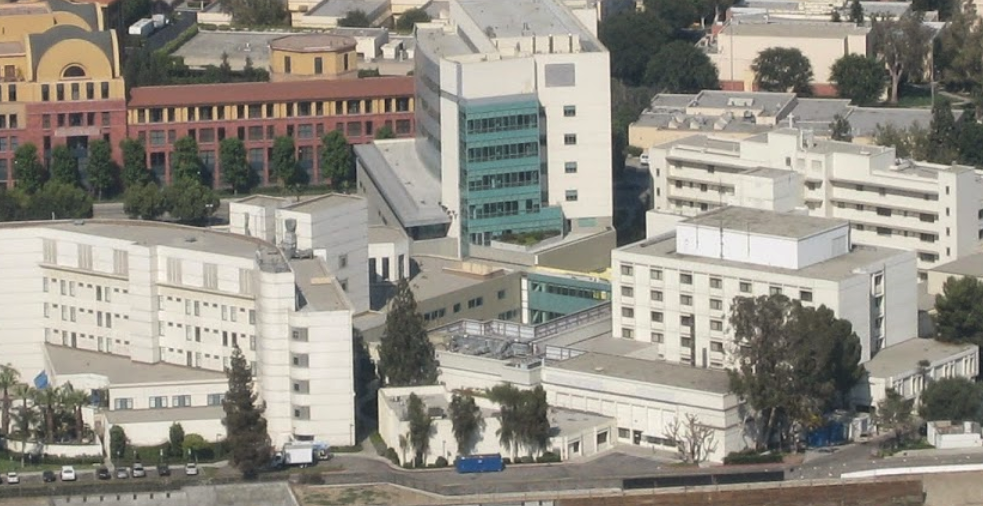
3. Emergency Room, Providence St. Joseph Medical Center, Burbank
I went to Providence St. Joseph Medical Center Emergency Room after my eight-month-old tumbled face-first off the kitchen counter and landed on his fortunately pliable eight-month-old nose, chipping his front tooth and severing the frenulum that once connected his upper lip to his gums. The free coffee is not located in the main emergency room waiting room with the vending machines and the TVs playing soap operas, nor in the triage area to which you will later be assigned to sit and chat about infant head trauma with a man who looks like Sting, but in a smaller subsequent waiting room in an area called, without apparent irony, Rapid Care. While drinking your coffee you can try to avoid eye contact with a room full of people who look perfectly fine to you and one person who definitely doesn’t, a gardener who sliced through his forearm on the job and is now standing with his arm wrapped in a jacket, his demeanor calm and slightly apologetic, like a man sorry for getting blood all over your perfectly nice waiting room.
Three and a half hours later the cheerful doctor assured me it’s all but impossible to break a baby’s nose (“at this stage it’s all cartilage”) and that most healthy American boys have torn their frenulums by the age of six; she should know, having two young sons of her own. The baby had no signs of brain injury, though she did recommendI check in on him every two hours overnight “to make sure he’s still breathing.”
4. Peekaboo Playland, Eagle Rock
Free coffee and free wireless are the twin stars in the firmament of indoor playgrounds, and Peekaboo Playland offers both. The coffee is served in an airpot, weak, bitter, too cool to scald a unsupervised baby, and accompanied by packets of sugar and cream.
Peekaboo Playland subscribes to the contemporary design philosophy that “everything belongs in a basket.” They have some really nice baskets at Peekaboo Playland. I’ve more than once fantasized about stealing a few. (A quick back-of-the-envelope calculation leads me to believe I’ve spent $272 on attractive toy storage baskets in my life so far, or $91 per child.)
Peekaboo Playland swears they clean all the balls in their ballpit with some sort of ultraviolet ball-cleaning device. It never even occurred to me that ball pits would be festering troughs of human effluvia, but now whenever I look into one I can’t help but think about what those UV lights nightly reveal.
The Peekaboo Playland soundtrack is a perfect expression of the “Songs That Were Cool The Year Your Kid Was Born” playlist — the last songs you remember enjoying before you bid farewell forever to the froth and churn of popular life, like Grizzly Bear, Phoenix, Neon Indian. Rock on forever, 2009.
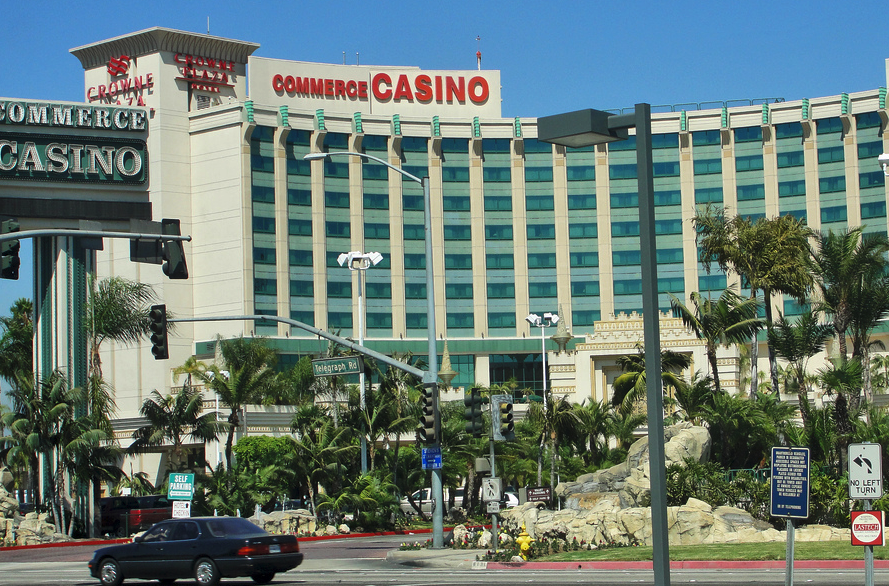
5. Commerce Casino, Commerce
California state law forbids casinos from giving away free alcohol, so the Commerce Casino gives away free coffee and soda instead. Mountain Dew appears to be the most popular choice with the hundreds of gamers sitting down to play poker, baccarat, blackjack, and Pai Gow on a Saturday night. The casino is sparsely decorated (at least by the standards of a casino) but a pair of giant golden statues in the lobby gesture toward the same vaguely Assyrian theme found in fuller force at the nearby Citadel Outlet Mall as well as the Babylon Gate at Hollywood and Highland. (Several conspiracy sites delve into the connection between Old Hollywood and ancient Babylon. Hint: it involves Freemasons.)
Players at the two-hundred-dollar-and-up tables also get free food. (Options include grilled salmon, prime rib, and for the large number of Asian patrons, bowls of beef brisket noodle soup and braised fish head hot pot.) Beside each player is a small wheeled table piled high with empty coffee cups and plastic soda bottles and mostly untouched meals.
I’ll be honest: I never tried the free coffee. I was intimidated. Commerce Casino is a serious place. There are no slot machines, no floor shows or day spas or cover bands, only two hundred and forty closely packed tables filled with middle-aged men and women, heads down, jaws tense. Overhead, sporting events are broadcast on the largest televisions I have ever seen.
I bought a Starbucks coffee from the kiosk near the entrance and drank it while gazing down at the card room floor.
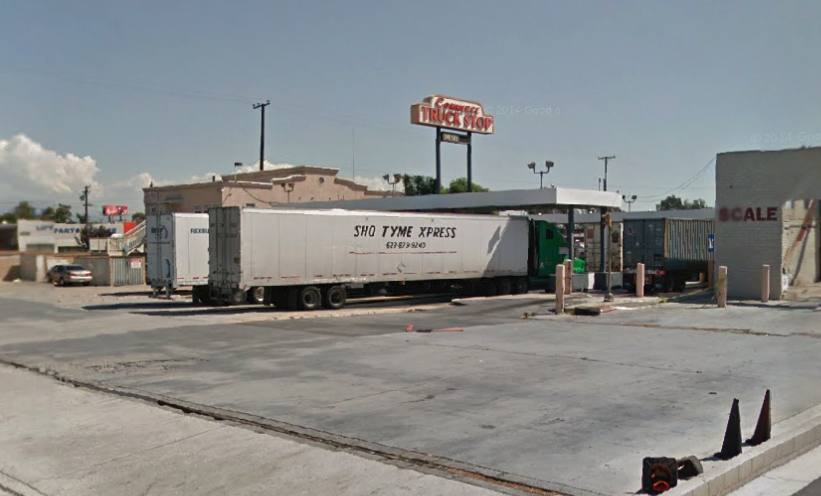
6. Commerce Truck Stop, Commerce
Commerce Truck Stop is very, very clear about what is and is not free. Coffee is free for anyone filling up on gas. Tea is not free. Soda is not free. Ice is not free. Coffee is not free, either, to anyone not getting gas. If you are getting gas, however, you can choose between two types of Boyd’s Coffee: regular and Hi-Rev. The slogan for Hi-Rev is “HI-CAFFEINE PLUS HI-FLAVOR EQUALS HI-PERFORMANCE.” This is presumably marketed at the thousands of truck drivers that pass through Commerce on their way to the Port of Los Angeles, the country’s busiest container port. Hi-Rev allows you to stay up all night focusing on the highway; it also engenders a ragged, throbbing paranoia. The coffee area provides a wealth of presumably-free condiments, including sugar, honey, two types of sweeteners, five types of cream, and a box of Moon Pies that was presumably misshelved, though you could probably make a case for their inclusion if you crumbled one up into your cup.
7. The Boo Hoo Breakfast, Bret Harte Elementary School, Burbank
To get free coffee at Bret Harte’s annual Boo Hoo Breakfast, you’ll first have to enroll a kindergarten student in Bret Harte, but it’s a small price to pay for access to a generous supply of real Starbucks coffee, as the PTA president repeatedly emphasized. The Boo Hoo Breakfast is an event for parents dropping off their children for their first day of kindergarten. The idea is that after that painful parting, new Bret Harte parents could congregate in the school’s library to drink Starbucks coffee and eat Porto’s pastries while bemoaning together the remorseless march of time. (“The Boo Hoo/Woo Hoo Breakfast,” the principal called it cheekily, reminding us that time can bound as well as march.)
The Starbucks part is important because the PTA is seeking to distance itself from the ancient coffee pot in the PTA-designated campus bungalow, a pot manufactured so many coffee fads ago that hardly anyone remembers how to use it anymore. It is always important to a PTA to seem youthful and relevant, which is why when I was in sixth grade in 1989 my best friend’s mother asked us to deliver the annual recap in the form of a rap.
The Starbucks coffee ran out less than halfway through the event, leaving me to stand around holding an empty cup. Both white sugar and raw were provided, along with what seemed to be several varieties of dairy milk.
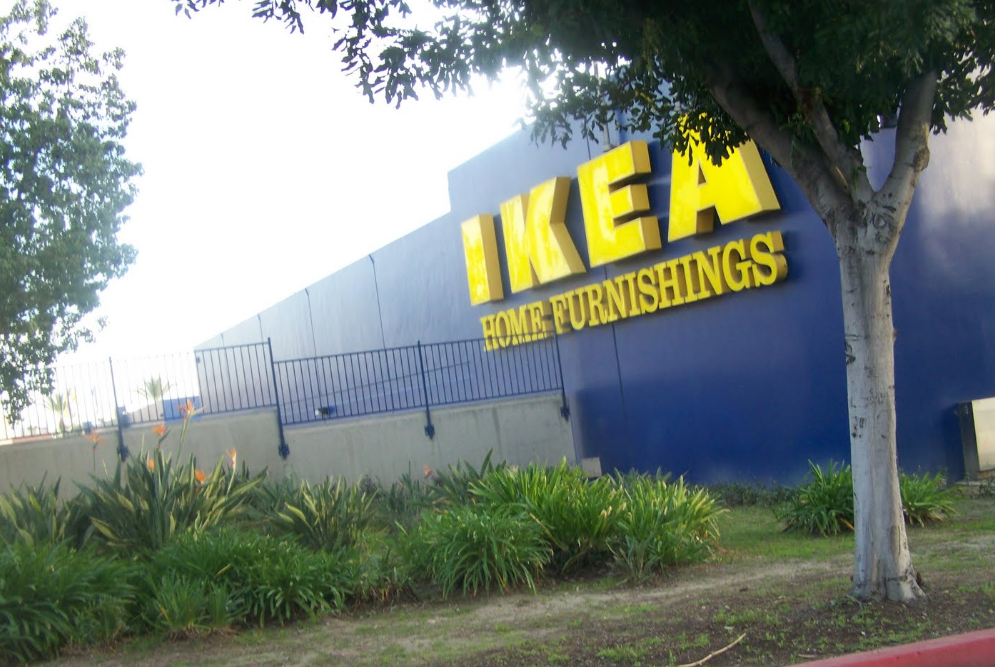
8. IKEA, Burbank
Coffee and tea are free at the IKEA cafeteria if you sign up for a free IKEA family card, which also entitles you to small discounts on a handful of IKEA products and an extra thirty minutes in Småland, the supervised play area. Children also eat free at IKEA on weekday afternoons and all day on Tuesday, a fact of which every single person with children within 15 miles of IKEA is already aware. I live only about a mile from IKEA and I regularly take my children there on Tuesdays for a free meal followed by ninety minutes of play in Småland. You have to be thirty-seven inches tall to play in Småland and attaining that milestone is a rite of passage. They measure the kids barefoot, too, so don’t even try it.
The coffee is actually quite good at IKEA, and comes with sugar and half-and-half. Sipping coffee, perusing a free copy of the IKEA catalog, can be very comfortable. Everything is provided for you — free baby wipes and diapers, lockers, childcare, wireless access, electric vehicle charging, pencils, measuring tape. With its mocked-up family rooms and cheerful yet clinical efficiency, it reminds me of a psychology experiment designed to observe private domestic behavior. I have witnessed people at IKEA fighting, crying, praying, studying, playing board games, bathing babies, feeding ribs to a pet dog, and engaging in BDSM role play.
I have no patience for people who claim that IKEA is stressful. I have little patience for people who complain about waiting in lines in general, which I find both weak and narcissistic, as if you expected to be the only person in this metro area of 10 million who might want to buy a bookcase on a Sunday. But for the easily discomfited, I’ll say that if you come to get free coffee on a weekday morning, IKEA is all but deserted, the cafe populated only by young mothers with their infants and small groups of disabled adults with their caretakers. Evenings, it is more crowded; weekends, yet more so. On days when IKEA offers its breakfast special (usually $1.99) at half-off, there is a line out the door. On days when IKEA offers its breakfast special for free, there are lines around the block. I used to live walking distance from IKEA in Shanghai and I’ve been there for free breakfast at IKEA on the weekend in China, which is like beating a special hidden boss level of IKEA. My husband and I have memorized all the little store shortcuts and I love beating the game: first the free coffee, cut through Textiles, then the backwards dash against traffic through Lighting, at last the sweet upswell of scented candles at the finish line.
9. An extra in a music video for The Mountain Goats, Sun Valley
Of course this particular video is already shot, but there are dozens of opportunities to be an extra every day in Los Angeles, and most sets provide extras with a large and varied assortment of snacks that may include anything but always includes Red Vines. Coffee is usually available in Starbucks traveler containers, and everyone with a proper job to do will be eating out of a Styrofoam container.
I had expected extras to be too lowly to merit attention, but on this set, at least, everyone was relaxed, jocular. John Darnielle stood joking with the extras and posed for cell phone photos. It hadn’t occurred to me we would have to act — I imagined my role would just be to stand in the background somewhere — but we were instructed to act first interested, then angry, then furious, then excited, as the exigencies of the script demanded. I was acutely aware of how much I didn’t want to ruin an otherwise good take by doing the wrong thing with my face. It’s hard to know just how furious your face should be.
The video was shot in the boundless, terrible Valley. There is little in this world I love more than the Deep Valley: Sherman Oaks is basically just Santa Monica after climate change has boiled away the sea, but the Deep Valley is a world to itself. You can start driving in any direction and drive forever, it just keeps looping, like the Lost Woods in The Legend of Zelda. Miles and miles of medical marijuana stores, tattoo parlors, sex shops, and junk yards, all baking under a sun like Sauron’s unblinking eye. Then just when you’re convinced you’ve seen it all, you drive past a place that rents giraffes, a storefront that promises to remove curses, a man counting five hundred thousand dollars in cash in the back of Russian restaurant, a young woman pushing a baby carriage full of live crayfish. When the Great Old Ones are recalled to power someday, they will be summoned right here in the Valley, in a strip mall between an El Pollo Loco and an adult bookstore.
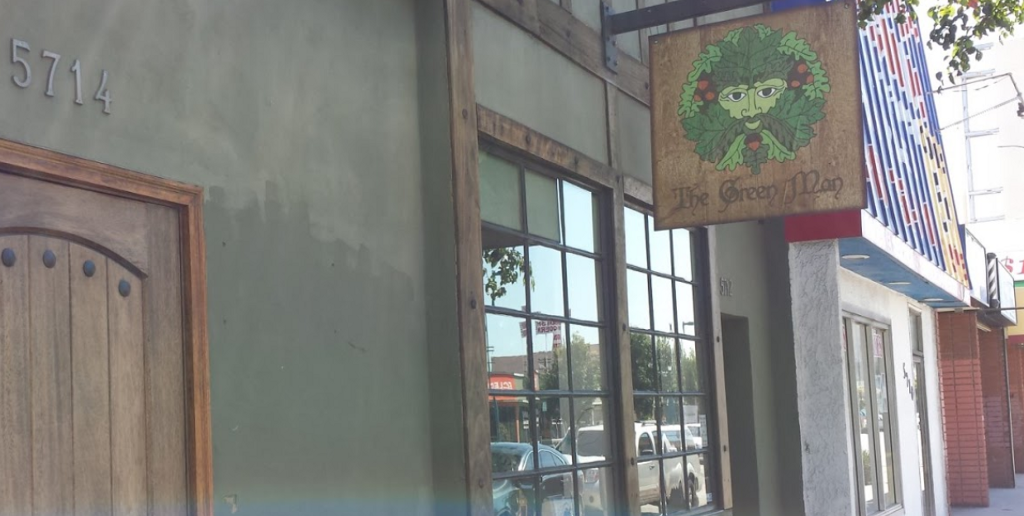
10. Coffee Reading, The Green Man Store, North Hollywood
It may be a technicality to call the coffee at The Green Man Store free, but as Hovik, the psychic who read my coffee grounds joked, the coffee is free, it’s the reading that costs fifty dollars for half an hour. The Green Man Store is a New Age emporium housed in a Tudor-style building surmounted by the picture of a placid male figure wreathed in leaves. Inside, floor-to-ceiling shelves hold hundreds of glass jars with handwritten labels that say things like Valerian and Mugwort. A woman in the back was giving a lecture on herbalism. Everything smelled mystical.
The middle-aged owners were leaning on the glass counter tops, listening to KDAY. They directed me through the store, out back, and up the stairs. I walked up the very non-mystical stucco stairs, glancing into the neighbor’s yard filled with corrugated metal awnings and protected by a barrier of razor wire over which The Green Man store had draped some twinkle lights. At the top of the stairs was a dark, empty room with three doors labeled 1, 2, and 3. It was then I had the distinct fear that someone was going to murder me.
Hovik was in room three, a space hardly bigger than a closet, decorated all over with pictures of fairies. He was young, handsome, and down-to-earth. He asked me to drink a cup of strong black coffee, leaving a bit of liquid behind. Then he asked me to overturn the cup onto a saucer. He let it sit for one minute–he timed this on his iPhone–then lifted the cup and stared inside.
He said there wasn’t much there to see. Over time, though, birds came forth, then a horse, an owl, and slowly a picture developed. We talked for almost an hour, mostly about my career, which Hovik pronounced “stagnant.” Hovik was talkative, somewhat repetitious, and didn’t seem in any hurry to wind up our thirty-minute prepaid session. He advised me to look into self-publishing ebooks, though he made it clear that advice was coming from him, not the spirits.
“You’re married to a man named Dev?” Hovik asked towards the end of my reading. (He pronounced it “Dave,” as my husband does, but I didn’t ask him how the spirits spelled it.) I spent the whole ride home trying to figure out how Hovik could have know that. He had a lot of very positive things to say about Dev, though — the spirits like him.
11. The Dr. Phil Show, Stage 29, Paramount Studios, Hollywood
Tickets to TV show tapings are free. All you have to do is sign up in advance and then arrive at the appointed hour following the dress code (business casual, no white clothing, no logos, no jeans). You can park on the street beside buses full of tourists from Oklahoma and Iowa and a tarp-covered RV that appeared to be the permanent home of a man wearing only the top half of a mime costume and his tiny, hideous dog.
Once inside you relinquish your cell phone, pass through a metal detector, sign a waiver, and then stand in line for an hour with your fellow audience members, all of whom could have doubled as guests on the show “Women Who Don’t Know ‘What Business Casual’ Means.” During that hour you will watch dozens of interns carry boxes of bottled water back and forth with great grins on their faces, like they’re having the time of their lives, and older guys with long gray ponytails doing the same job without smiling. All your needs will be met by a team of solicitous pages wearing uniforms so ill-fitting it seems as though CBS had required the pages to make their own. Two episodes of Dr. Phil are taped back-to-back and in between you can enjoy free coffee, water, juice, and snack crackers.
The most common sentiments among the tourists in line was, This is not what I thought Hollywood was like. I grew up in Hollywood. For most of the country, “Hollywood” has a metonymic association with the entertainment industry. For me, “Hollywood” evokes the elderly man I’d seen that morning wearing a waist-length cherry-red wig and a leather policewoman’s costume, riding a little girl’s bicycle slowly down Gower.
The tourists were uniformly pleasant and game, if somewhat rattled. The two young girls behind me had driven in that morning from Oklahoma. The family beside them, also from Oklahoma, had already been in L.A. a few days and gushed about Rubio’s, a fast-food Mexican chain restaurant with almost two hundred locations in five states. A few audience members were big fans of Dr. Phil but most had just signed up for the most convenient TV show taping. Everyone agreed that Ellen was the most coveted taping but apparently it was booked months in advance.
A cheerful page with a pixie haircut circulated among the audience with a paper cup, brightly requesting that we spit out our gum. Then a man in a suit came out to warm up the audience. Several people danced onstage for a Dr. Phil mug while I sat imagining what would have to be in that mug to induce me to get up and dance for it.
This episode had it all — surprise guests, furious denunciations, shouting from the audience — and yet the whole thing felt weirdly muted. Dr. Phil seemed disconnected, hardly there. His guests, a feuding mother and daughter, would curse and rail against each other when called upon, then sit quietly during the commercial breaks. There was a lot of sad, nervous silence.
In the end, Dr. Phil offered the daughter a free stint in rehab and walked off stage with his wife, then we were dismissed. I walked back to my car past shopping carts plunged into weedy lots and desultory construction sites plastered with peeling layers of posters advertising underground punk shows thinking, “I should have gone to Ellen.”
Photo by rsseattle
The Not-Trump of the Lower East Side
by Brendan O’Connor
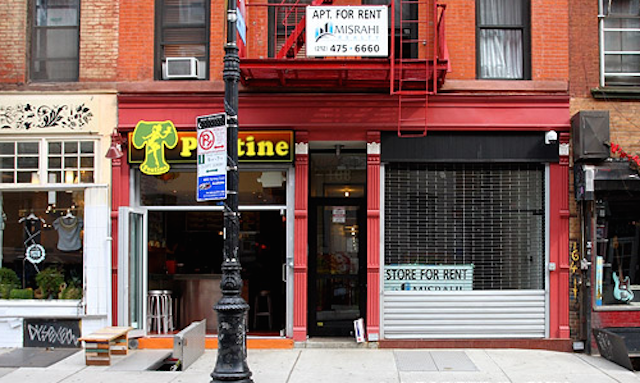
Welcome to Surreal Estate, a column in which we explore listings and stories from the tumultuous New York City real estate market.
146 Orchard, 5B
• $2,495/month
• Studio
• ? square feet
• Nearest subway: JMZ/F at Essex Street/Delancey Street
“The idea of this neighborhood is basically bars, restaurants, and art galleries,” Joe Safdie, an agent with Misrahi Realty, told me as we strolled through the Lower East Side on Wednesday afternoon. We were supposed to visit three apartments that he had listed, but one had rented the day before and one was already under contract. (He generally recommends that clients look at ten to twelve apartments over the course of two, maybe three days.) “Inventory moves pretty quickly.”
According to Streeteasy, the studio at 146 Orchard last rented in 2012 for $2,295 a month — an increase of two hundred dollars in two years. It’s a simple apartment — basically just a rectangle, with two big windows looking out the back of the building. I asked Safdie the square footage, but he demurred. “When it comes to rentals, I don’t like to quote square footage, because square footage can be very deceiving,” he said. “When it comes to buying, then it matters, because you’re actually paying for every square foot. When it comes to rentals, I always tell my clients, don’t ever focus on numbers with square footage, focus on what you need to put in, what you would like to fit in. Can you fit your bed, can you fit your couch, can you fit your TV?”
The studio looks out upon the back of 139 Ludlow Street, an old funeral home on the other side of the block that Bowery Boogie reports was denied landmark status by the Landmarks Preservation Committee last year — it is now being renovated by the Soho House into a new location for more members.
A new restaurant is due to open on the ground floor of 146 Orchard — construction has been going for at least a year, Safdie told me.”Restaurants are the only businesses that can survive in this neighborhood. Retail can’t survive as much. People don’t come here to shop. People come here for the bars and the restaurants, hospitality,” Safdie said. But even restaurants have a hard time of it: The new restaurant, opened in collaboration with The Food Network’s Aaron Sanchez, was supposed to have opened late last fall. An earlier tenant in the space, APL, had closed after five months, opening in May 2011 and closing in October. APL became The Orchard House, which closed for electrical repairs in 2013 and never opened again.
“Why is Manhattan so valuable?” Safdie asked, before answering his own question. “Because Manhattan is surrounded by water. Because it’s surrounded by water, basically, everything pushes out — starts from the middle, and pushes out. Once you hit the water, there’s nowhere to go, so everything bounces back in. People say, okay, I’m paying the same for out here, might as well pay more for the middle. That’s basically what drives price in a given area.”
“Same thing has happened with Williamsburg, pushed up against the water,” he added. “It’s very similarly priced to the city.”
Misrahi Realty has been an influential force in both rental and commercial real estate on the Lower East Side for years. In a 2007 profile of Misrahi Realty progenitor Sion Misrahi — a long-time Lower East side business-owner — the New York Times wrote, “His neighborhood holdings are limited to eight tenement buildings, most of which he bought for less than $1 million (and could sell for eight times that). He is not a Donald Trump of the Lower East Side. But, arguably, his vision and relationships with landlords had more to do with the area’s evolution than anyone else.”
But things have changed, as is their wont, in New York and everywhere else. “We represent seventy buildings in this area,” Safdie told me. “We represent this area, pretty much.”

160 Orchard Street, 2F
• $2,595/month
• One bedroom, one bathroom
• ? square feet
• Nearest subway: JMZ/F at Essex Street/Delancey Street
Next, we walked to a one-bedroom down the street, at 160 Orchard. The apartment’s current tenant was home watching television, and the apartment — already narrow — was full of boxes, although he hadn’t packed up his DJ station yet. He and his fiance are moving to Los Angeles — she got a job — but he hopes they’ll be able to move back at some point.
“I love the area. The area is pretty awesome,” he said. “I mean, I hate Hair of the Dog.” (A bar.) “I hate that bar. It’s all bro-y and stuff. But, they just opened like, a cider bar right below us. And that place is only open until 2, they only serve cider, no hard liquor, it’s very low key.”
Safdie told me that Misrahi put the cider bar people in that space, although he did not elaborate. Recently, though, the firm had tried to help pizza-ruiners Artichoke Basille’s expand to the Lower East Side. “We were going to move them into one of our spaces, but they couldn’t get a liquor license,” Safdie said. “The board basically said, we don’t want to oversaturate the place, and a place like Artichoke is always packed.”
Community Board 3 has been restricting the number of liquor licenses granted to certain areas on the Lower East Side. (The conflict between Misrahi and CB3 is long-standing. “What Sion and those people should realize is they’ve let greed run rampant,” community board chairman David McWater told the Times in 2007.) Safdie is skeptical. “I think sometimes they might be a little bit overboard?” he pondered. “I think they’re right at times,” he said, “but sometimes they flex their muscles just to flex their muscles.”
Safdie’s tenant at 160 Orchard is optimistic about the future of the neighborhood. “It comes in waves,” he said. “I feel like the East Village was like that a couple years ago, it was too bro-y and stuff, and now it’s not as bad. And I feel like Lower East Side is going through that phase right now. Hopefully it will go away.”

168 Ludlow, 1R
• $2,395/month/month
• Studio
• ? square feet
• Nearest subway: F train at 2nd Avenue
As we walked to the afternoon’s third and final apartment, we passed the sports bar in question, Hair of the Dog. “This is the bar he was talking about,” Safdie said. “It’s a sports bar, so it has a complicated relationship with the neighborhood. Whoever really loves sports, loves this place. Who ever is not really a sports person, doesn’t like it as much. They can be pretty rowdy. It attracts the sports-type crowd. It can be loud.”
Born and raised in Flatbush — where he still lives — to an Italian mother and a Brazilian father, Safdie has been working on the Lower East Side for about a year and a half. “I spend ninety-nine point nine percent of my time here,” he said. “I’m debating right now whether I want to sleep where I work.” Safdie used to work in jewelry, he told me — three years ago, when he was twenty, he was basically running his own company, but he wasn’t happy. “I couldn’t relate — selling earrings or necklaces, I couldn’t relate. I don’t know when they’re using it, or relate to a lady and say you can wear this at this event or whatever. This is something that I can relate to.”
Eventually, Safdie said, he’d like to own some of his own buildings, and be a landlord. “I’ve seen buildings here where I know if I took it over I could increase the rent-roll by three hundred thousand a year, whether its new lightbulbs or new tile or whatever,” he said. “You can justify charging more for rent, and people would be happy to pay, versus now people are paying less rent, but complaining.” He elaborated, “So the reason that New York City landlords generally have a bad reputation is because they kind of, they’re charging so much money for such little space, most people from all around the world think oh my god that’s an audacity, to charge that much for that much space.”
The apartment, a studio, is narrow, with high ceilings. Also, it has a backyard — concrete, and small, but a backyard nonetheless.
“I certainly think the neighborhood still has the allure,” Safdie said. “I work with clients from all over the world, people that come in from Europe, Asia, China, students, successful people — people that are making a million dollars a year, but want to live on the Lower East Side.” The people who are still drawn to the LES, though, do share something, he said. “I’m finding the commonality is young people — young professionals, called yuppies. You’ve heard of yuppies?” (I have.) “A neighborhood is as popular as the number of people that hang out there, the amount of stuff that’s there,” Safdie said. “It’s good to maintain history, but it’s also good to bring up the popularity of a neighborhood. Everybody usually really likes it, as long as it stays neighborhood-y.”
Photo of 168 Ludlow via Streeteasy
Have you noticed a real estate listing that you would like to have investigated? Send cool tips, fun listings, and hot gossip to brendan@theawl.com.
A Poem by Morgan Parker
by Mark Bibbins, Editor
The Book of Negroes
1
You see the commercial on BET
while you’re painting your nails.
The women are only crying.
The cabins are dull. You’re trying
to text this dude. Negro, please,
why sleep when the world so bad.
Twisted golden butt in ash. You crazy.
D’Angelo. Slum Village. That good good
memory of skin. For him you would
be pumice shined to pearl.
He makes you wanna write your name.
2
This book is spit, cum, cloud cover.
We Definite people.
This book is about lying down quietly.
No one wrote the blessing of our ankles
in foamy water. We always emerge.
We sing because we cannot bear the heat.
We wear black. We cannot bear the heat.
We don’t call the police. We fill bathtubs with
windchimes and lower them in the ground.
We Nothing left.
This book is uncorrected proof. You read it
on your eyelids. You sleep under it.
You give it away. You tear out whole chapters.
You say you read it but you didn’t.
3
What to a slave is the fourth of july.
What to a woman is a vote.
What to a slave is an award show.
What to a slave is a story book.
What to a slave is fine china.
What to a woman is a canopy bed.
What to a slave is the hard sky.
What to a woman is the bottom of a glass.
What to a slave are flatlands from an aircraft.
What to a woman is a missed call.
What to a woman is the milky way.
What to a slave is a square technically it’s perfect.
4
Summertime and the living is
extraordinarily difficult. The sunset
seems unimportant. It becomes
a calm. Sunglasses, white
wine spritzers. Would you hate yourself
less if you picked your fruit from trees.
You prefer friends to remain
in train stations. What side the mountain
is home. You were not invited
into the orange groves.
Sometimes you go outside
and control is possible.
Everybody has an opinion.
Everything rolls off your shoulders.
Morgan Parker is the author of Other People’s Comfort Keeps Me Up at Night (Switchback Books, 2015). She is a Cave Canem graduate fellow and a Pushcart Prize winner. She lives in Brooklyn.>
You will find more poems here. You may contact the editor at poems@theawl.com.
Time Money and Vice Versa
Time Money and Vice Versa
“In one hour of chore time saved, Mallon estimates she can make $1,000 for her company. Tech companies have long realized that if you hook up your employees with everything on site, they’ll work longer, more industrious hours. And if apps deliver that same to the home, corporations keep benefiting. Employees can work even more undistracted hours remotely or buy even more on-demand services (like that Netflix binge). The perfect cycle of productivity and consumption is created — and all without ever having to step outside.”
Bitchin Bajas, "Marimba"
Fair warning: If you press play on this one you are probably going to keep playing it over and over again and again until suddenly an hour has gone by and you’re like, Huh, what have I been doing all this time, oh well, let me play this track once more. It’s mesmerizing, is what I’m saying, and it also puts you in a state where you feel like you’re somewhere else, and what is better than being anywhere but where you are right now? Nothing, that’s what. Anyway, enjoy.
New York City, March 24, 2015
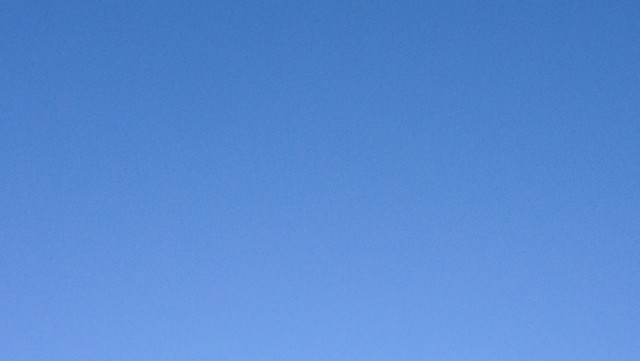
★ The distressing undynamic March continued, more of the same, nothing but February with better lighting. Still a lump of snow was surviving under the shrubbery. Out on Broadway, there was no real shade, only different illumination schemes in the crisscrossing reflected sun. Hair gleamed. The best measure of the sun, though, was the grim chill on descending into the subway. Downtown, the masonry was as stingy with light as the the glass uptown had been generous. Crossing the street into the shadow brought on an involuntary wince. Down by the floor of the eye doctor’s examining room, a space heater displayed wobbly (and blurry) images of ersatz flames and coals. At bedtime, Little Miss Stubborn got on the wrong bus: “It went to Coldland. A country so cold that everybody has a cold all year round.”
The Car Seat
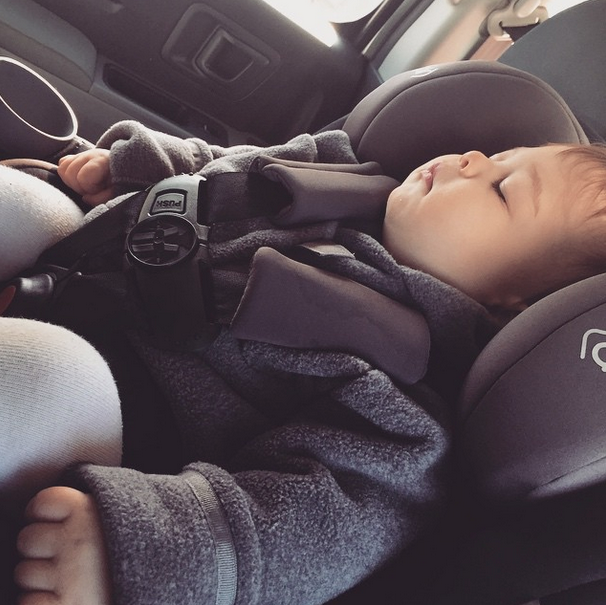
If I had to choose the single worst aspect of parenting in the first year of a baby’s life, I have a very simple answer: the fucking car seat. Every aspect of it — choosing one, buying it, installing it, removing it, putting it into another car, strapping a screaming baby into it — is totally maddening and utterly exhausting.
The first challenge you will face, alone as parents, just unleashed from the hospital, will be getting your baby home. If, like me, your baby was born at the tail end of a blizzard in Manhattan and if, like me, you live in Brooklyn, well, getting home will possibly be worse than the delivery.
We planned in advance: We researched the best and safest infant car seat (which it turns out is, unsurprisingly, probably the most expensive), and we bought it. We installed the base into our tiny car weeks before Zelda’s planned escape from my womb. We hauled the little seat into the hospital, where a nurse showed us how to strap her little body into the seat. She sat there, strapped in, surrounded by sausage-rolled blankets, seemingly gasping for each breath. We threw the seat into the base which, we’d read, shouldn’t budge “more than an inch” in its position. It budged. We white-knuckled it all the way home. We made it.
We didn’t drive that much after the baby was born, so she never really got a car groove going. She threw up in the car sometimes, she yelled, and I wrestled, often, with the sneaking suspicion that the car seat was improperly installed. Finally, I hired a professional car seat installer, and paid the best seventy-five dollars of my life to find that I was correct: The car seat wasn’t situated correctly. The installer showed me how to get it in and out of the car in seconds flat: You need to move seats and get your entire body into the back seat of the car. You push on the seat with your body, you tug harder than you’ve ever tugged on the seat belt which will be all that stands between your baby and the outside should an impact occur. You struggle and huff and puff. You turn red. And you get that fucker installed properly. And then, before you know it, the little rat has outgrown her first car seat and needs an upgrade.
Modern car seats are gigantic. So if, like me, you are married to someone who is six-foot-four, you can forget about travelling anywhere in comfort unless you’re prepared to purchase a Suburban or a minivan. The rules of car seats decree that the back of the seat mustn’t touch any of the seats in front of it. And, because my husband is so tall, his seat needs to go alllllll the way back. That means that the baby seat cannot be in the middle of the backseat, but behind the passenger seat. That’s my seat! In fact, even now that I have my own car, I can’t drive it if my husband is along for the ride. I’m the only person in the family that can squeeze into the passenger seat with the fucking car seat behind it. “What,” I ask several times a week in desperation, “would we do if we had ANOTHER baby? Never go anywhere together?”
Two weeks ago, my grandmother died. She was nearly ninety-one years old. So Zelda and I flew home to Pittsburgh together. Not wanting to be stranded in the suburbs at my father’s house all week, I decided to rent a car at the airport. I’m always prepared, and I made my plans carefully. I decided that I couldn’t travel alone with a thirty-pound one-year-old, a suitcase, a carry on, a stroller, and a car seat in a bag. That is just crazy. So I called the car rental places and confirmed that yes, they had car seats that would work in my rental car for her.
After a somewhat harrowing but short (less than an hour!) flight home, we arrived at Enterprise Rent a Car in the Pittsburgh International Airport. I don’t want to say that something smelled off from the beginning, but as I stood at the counter trying to appease my daughter who really just wanted to be set free to destroy the terminal, it wasn’t exactly reassuring to hear “Ha! I’m not sure, it’s my first day,” when I asked about the car seat. The Enterprise employee conferred with several others before letting me know that my car seat would be available in the parking lot where I was going to pick up the car. Then, he told me that the cost to rent the car — a Toyota Corolla — would be six hundred dollars. “Fuck it, I’ll figure it out later,” I told him as I took the receipt and the navigational unit (apparently they still make those giant Garmin things that plug into a lighter outlet!) from him and walked away, baby screaming the whole time.
The car seats that Enterprise had on offer left a lot to be desired, it turns out. One was too small, one too large, and the only one that seemed like it might fit was broken. All were terribly cheap and dirty, and most of them seemed to be at least ten years old.
Now, I didn’t expect a remarkable car seat, even though I was paying six hundred dollars to rent a car for three days; I expected a car seat worth the additional ten dollars per day that I was paying for it. I also didn’t expect them to install it for me; I know how to do that fairly quickly on my own, even with luggage and a baby in a dark garage at 4:30 PM when it’s thirty degrees outside. But, as I’d called in advance and warned them, even telling them my daughter’s age and weight, I did expect a functional car seat. Sadly for the employees of Enterprise Rent a Car, I can turn into a bitch pretty quickly. My daughter was in her stroller crying as I threw car seats onto the ground, discarding each as either broken, old or the wrong size. Employees began flocking around me, disappearing and reappearing with other old broken car seats, asking me if I wanted to go inside to keep warm. “No, we’re fine!” I kept barking, though it was by then so completely obvious that nothing was fine. “Can I get you anything?” a nice female employee asked.
“Yes,” I said, in tears. “You can get me a fucking car seat that works and can be installed into a modern car. I’m paying six hundred dollars for a car for three days; I’m going to my grandmother’s funeral; and I called beforehand to make sure this exact situation wouldn’t happen. These car seats are illegal! They update them like every single year. These should be thrown in the fucking garbage!” She blinked and nodded. Over an hour had passed since we landed.
I called taxi companies to see if they could pick us up and had car seats. A laughable request, apparently. Finally, I called my father, who has a car seat. He would have my brother come over, put the seat in, and pick me up, he said. They live about an hour away.
“I don’t need the fucking car,” I finally said, pushing my still-crying daughter back towards the airport. “Can we call you a taxi?” the nice Enterprise woman asked me. “Can you magically make a taxi with a car seat appear?” I yelled. “That’s the thing you guys don’t realize — I can’t FUCKING LEAVE the airport without a car seat. We are stuck here until someone picks us up!”
As we walked away from Enterprise one last time, I saw a young lady approaching a rental minivan with a toddler in a stroller. “Good luck!” I yelled, no context offered.
My parents didn’t have this problem. If car seats existed in 1977, when I was brought home from the hospital, they certainly weren’t a requirement. No, they just loaded me up into whatever tank they drove that passed for a car and shot on home. And here I am, thirty-seven years later. I made it. Now, I don’t think that they didn’t NEED a crazy car seat like the ones we have today. They did, they just didn’t know it yet, and our collective lack of safety was their gain in never having to deal with the painful necessities we now face as parents.
As I sat in the airport, defeated on a bench feeding my now happy and warm daughter animal crackers, I thought about the indignity of my situation. “No preparations could have saved me from this,” I told myself. “I yelled at people and swore at them, in front of my daughter, and nothing could have stopped it,” I told myself. “Well, Uber could have stopped it,” I said aloud to Zelda, who smiled. “Uber has those amazing little car seats they install in seconds flat, always nice and clean. We’ll get an Uber home from JFK, and it’ll be fine,” I told her. And we did.
The Parent Rap is an endearing column about the fucked up and cruel world of parenting.
